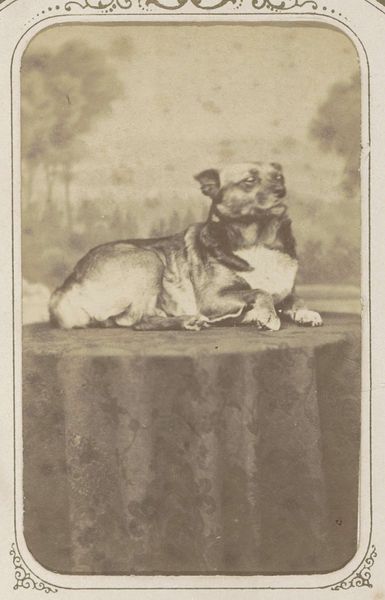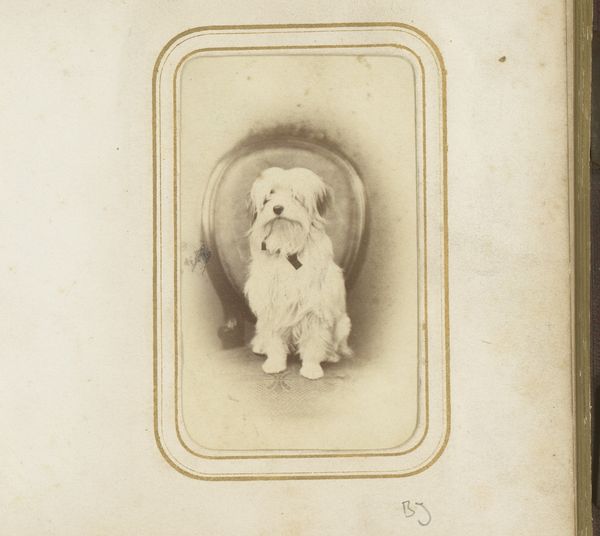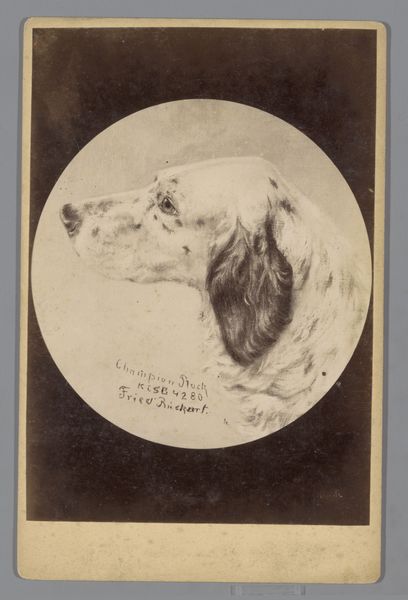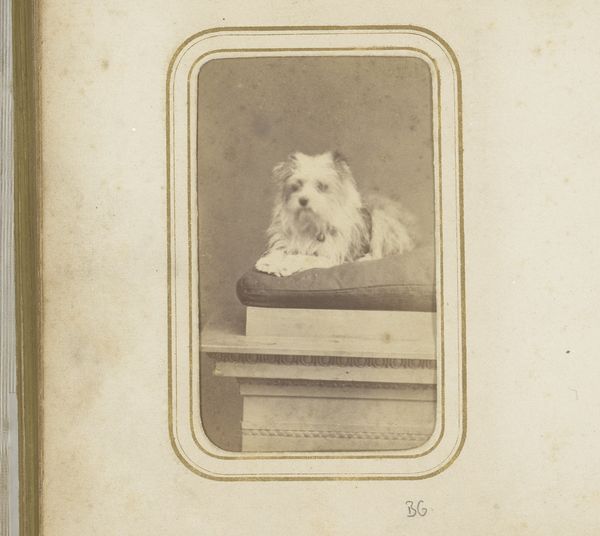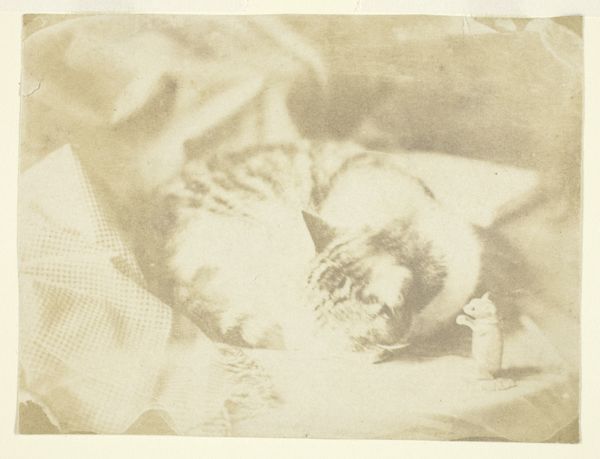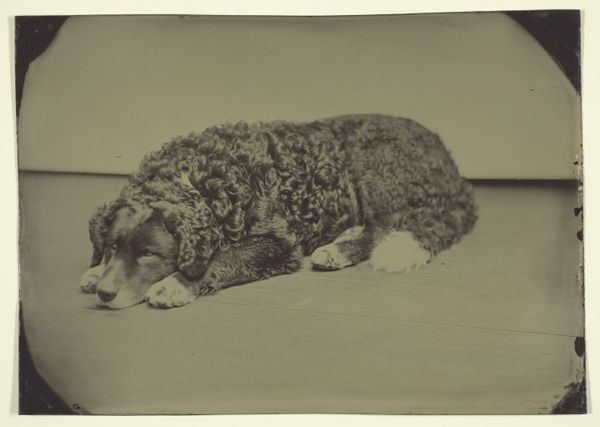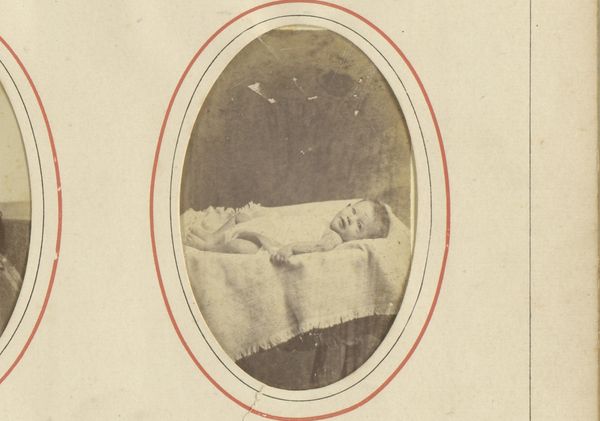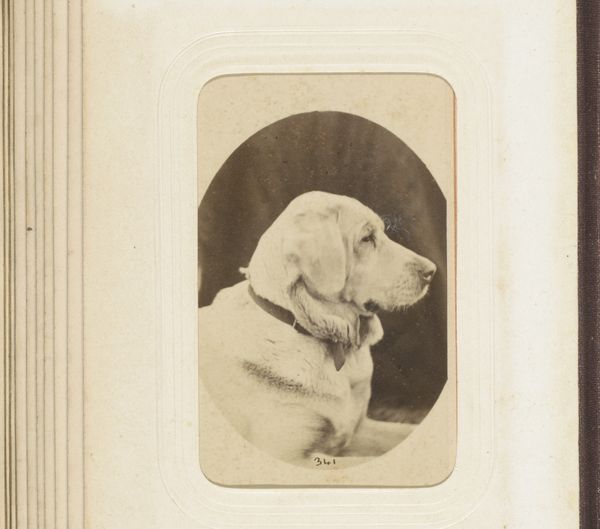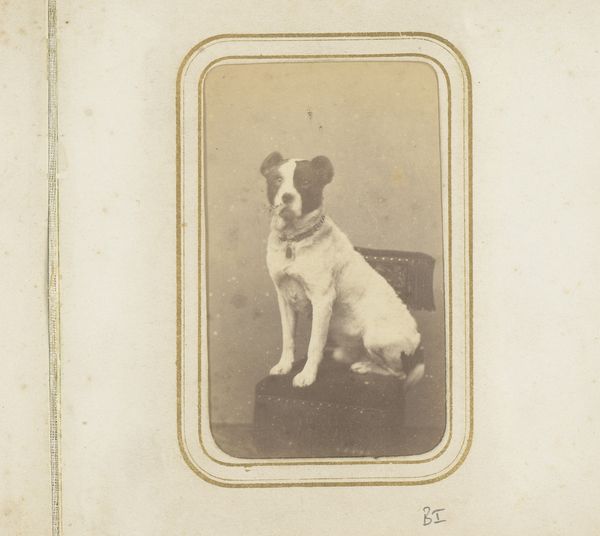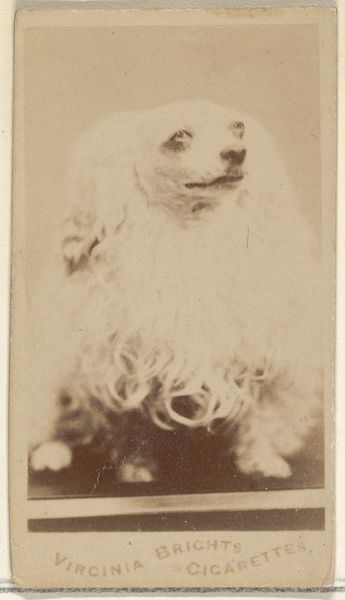
#
pencil drawn
#
aged paper
#
light pencil work
#
pencil sketch
#
dog
#
old engraving style
#
old-timey
#
19th century
#
watercolour illustration
#
historical font
#
columned text
Dimensions: height 91 mm, width 53 mm
Copyright: Rijks Museum: Open Domain
Editor: So, this piece is "Liggende hond," or "Reclining Dog," attributed to L.J. Goudman, dating back to somewhere between 1860 and 1890. It appears to be a pencil drawing. There’s something quite tender about it. How would you approach it? Curator: It’s the "how" that interests me most. We have a late 19th-century pencil drawing. Think about the paper itself – its sourcing, its texture, its journey to becoming a surface for art. What type of pencil was employed? And how was this drawing subsequently disseminated – was it for private use, mass reproduction, a gift? Each choice implies a particular social context, a network of materials and labor. Editor: So you’re less focused on, say, the dog as a symbol, and more on the industrial context that made the drawing possible? Curator: Precisely. Consider the accessibility of art materials in this period. Who had access to them? What does it say about Goudman’s place in society, or his patron's, that they could afford the time and materials for such a leisurely pursuit? Think about the labor involved in producing pencils at the time – the graphite mines, the wood mills. These are the hidden stories within the image. Editor: That’s a fascinating way to look at it. I was initially drawn to the subject itself - the sweetness of the dog – but you’ve re-oriented my perspective completely, toward the systems of production. It’s less about sentimentality and more about, like, resource allocation? Curator: Yes, and the implications of that allocation. How does art uphold, or perhaps even subtly critique, those systems through its very making? Can a seemingly simple drawing of a dog tell us something about class, industry, and the commodification of leisure? Editor: I'm thinking about art in terms of accessibility and production now, thanks! Curator: Excellent! Always consider how things are made. It opens up a whole new way of interpreting images.
Comments
No comments
Be the first to comment and join the conversation on the ultimate creative platform.
